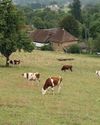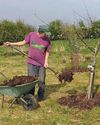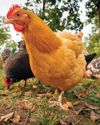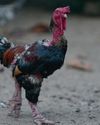
The of using broody hens to incubate, hatch and raise chicks really come home to roost (pun intended!) once the chicks have been hatched. Unlike incubating and hatching using an incubator, the broody hen takes on all of the responsibility of raising the chicks. She will ensure that they are fed, watered and are kept warm. She will naturally make decisions on their welfare, taking a lot of the burden from you. There are some caveats to be aware of so let us guide you through those final stages to independence.
THE FIRST DAYS WITH THE FLOCK
Earlier on in this series we advised that we allow our broody hens and chicks to roam with the flock as soon as the chicks can run after the broody hen. This can be as early as 24-hour hours after hatching. To recap, this may be nerve-wracking for many people as chicks are small and vulnerable compared to adult members of the flock but they do have an extremely protective broody hen. We cannot overemphasis the need for LOTS of space for this method to work. The broody hen and her chicks must be able to navigate around, but not with the flock.
This early integration will not always work as every hen and every chicken breed is different so it's good to be prepared to separate the flock from the broody hen and chicks if necessary. In many years of using this approach we have not lost a single chick, but an over-curious hen has lost a feather (just one feather) from the broody hen expressing her protective nature! For the first few days we are vigilant with the chicks particularly at roosting time.
This story is from the June 2023 edition of The Country Smallholder.
Start your 7-day Magzter GOLD free trial to access thousands of curated premium stories, and 9,000+ magazines and newspapers.
Already a subscriber ? Sign In
This story is from the June 2023 edition of The Country Smallholder.
Start your 7-day Magzter GOLD free trial to access thousands of curated premium stories, and 9,000+ magazines and newspapers.
Already a subscriber? Sign In

How to Buy a Smallholding in France- Long-time smallholder Lorraine Turnbull looks at the practicalities of moving to rural France
Aspiring smallholders are continually thwarted by the prices of smallholdings and property with land located within the UK. Even the humblest croft in Scotland comes with a substantial price tag and conditions which would make even an adventurous wannabee consider carefully. But all is not lost. For those willing to take the adventure of a lifetime, there is always Europe, and one of the most popular places is France.

Meet the Bournemouth goats and their supporters
These capricious animals are hard workers preserving the natural habitat

Still warm enough to sit outside with a Pizza
Henrietta Balcon uses fresh figs to create an unusual dish at Harvest time

Goodbye to the birds of spring and summer
If you look and listen you might be able to see them preparing to leave says The RSPB

Get ready for the colder weather in the warmth of late summer
Claire Waring advises on doing the best to make sure your colonies survive until next spring

Preparing the Veg Patch for Winter
Lee Senior says, a well-run plot can excitingly continue to produce good quality, tasty, fresh food for much of winter

Time to prepare to plant your orchard
Wade Muggleton, smallholder and author of The Orchard Book, shares his practical experience so you can create your own fruit collection

Choosing feed for the autumn
As autumn approaches, Joanna Palmer, nutritionist at the Smallholder Range, offers advice on choosing the right feed to support your adult birds through their annual moult and ensure your young birds grow and finish well at this time of the year.

Vet advice from an experienced poultry vet
Reflecting on how much the humble hen has helped people world wide plus advice on stopping the scourge of red mite

Give your hens some support
Paul Donovan looks at the right and wrong ways of handling birds